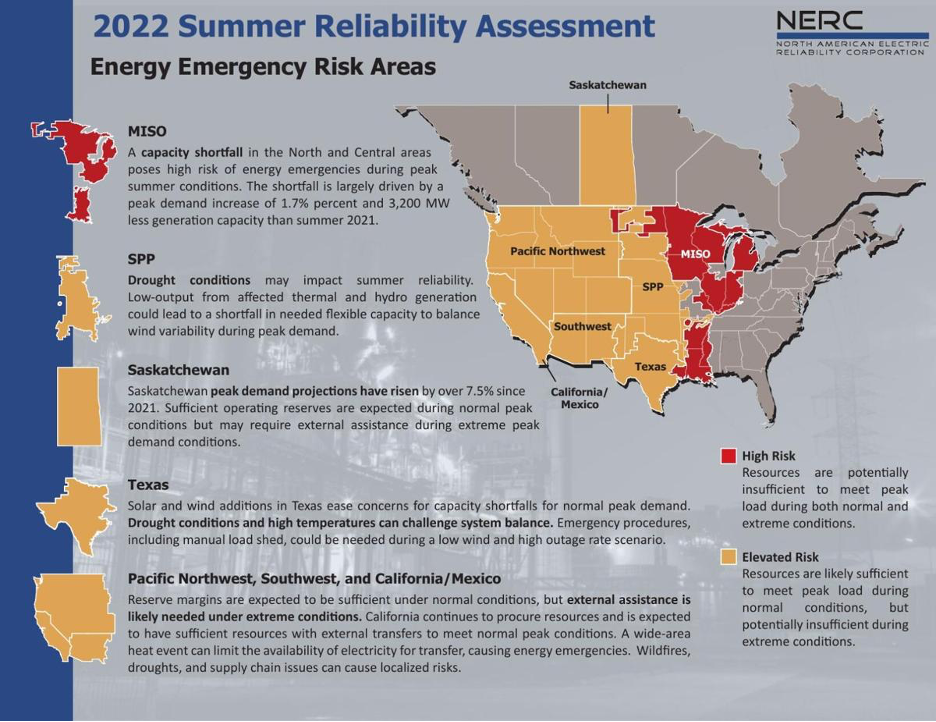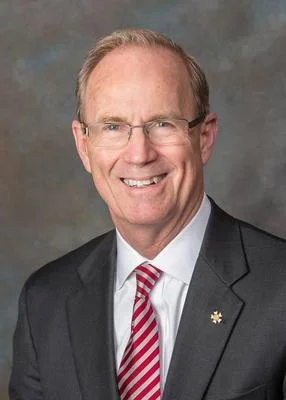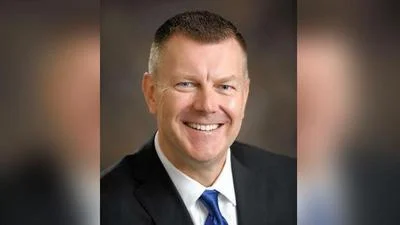It’s like flying an airplane while trying to build it. That’s what critics of Illinois’ aggressive effort to shift to renewable sources for making electricity have long said
That airplane crashed faster than even they expected. Electricity bills and the risk of brownouts are jumping quickly in Illinois, and it’s not just green energy skeptics saying so.
The most significant warning came recently from the Midcontinent Independent System Operator, or MISO, which oversees the power grid for Illinois and much of the Midwest. Their warning was contained in a recent forecast by the North American Electric Reliability Corp., a regulatory authority that monitors risks to the grid, and was summarized by the Washington Post as follows:
Southern Illinois is among the most vulnerable places in the country heading into the summer, according to a newly published forecast by the North American Electric Reliability Corp., a regulatory authority that monitors risks to the grid.
The area, along with large parts of Michigan, Wisconsin, Minnesota and other states linked to the regional grid, has been put on notice in the forecast that it is facing a “high risk of energy emergencies during peak summer conditions.” A major reason is that some of the coal plants that regulators assumed would keep running for another year or two are instead coming offline. Some plant operators are choosing to shut down rather than invest in upgrades for coal plants that do not fit with states’ and the federal government’s long-term goals for clean energy.
“We are seeing these retirements occur at a faster pace than expected,” said Jim Robb, chief executive of the regulatory authority. “The economics aren’t great, so coal plant operators are saying ‘uncle.’”
This map from the MISO report shows high risk areas in red, which include all of Illinois except the north.

Meanwhile, electricity costs are already spiking in much of the state, not just Southern Illinois, which local news sources have covered extensively.
For example, News 25 in Peoria reported that central Illinois consumers “will pay double for energy starting this month, as a deal mitigating costs for many communities expires, with no new contract in sight. Communities like Peoria, Morton and East Peoria all participate in municipal aggregation programs.”
And the City of Springfield already asked Illinoisans to begin cutting back on consumption in order to reduce the risks of brownouts.
That estimate of approximate 50% increase in energy costs was borne out in recent op-ed by the president of Ameren, which supplies electricity to much of Southern and Central Illinois. The “typical residential customer in the Ameren Illinois service territory is expected to see a 54% increase in their energy bill starting in June of 2022,” he wrote. “The actual impact will depend on the amount of energy used.”
How can this have happened? Illinois for decades had a competitive advantage thanks to reliable and relatively inexpensive electricity.
Multiple factors have converged to drive up prices, everyone seems to agree. They include inflation, the conflict in Ukraine, high natural gas prices and the closure of coal-fired electric power plants.
Unquestionably, however, the rush to green energy is playing a major underlying role in rising prices and capacity shortfall. Both Illinois and the federal government put a target on the back of the whole fossil fuel industry, stifling investment therein and quickening the closure of traditional power sources. And renewable sources just aren’t ready to fill the void.
Lawmakers and regulators simply blew it when matching demand against supply. As stated in the MISO report quoted above, a major reason for the brownout risk is that some of the coal plants that regulators assumed would keep running for another year or two are instead coming offline. Some plant operators are choosing to shut down rather than invest in upgrades for coal plants that do not fit with states’ and the federal government’s long-term goals for clean energy.
Power production just isn’t sufficient to reliably meet expected demand. External factors like the war in Ukraine do not explain the current capacity shortage.
CEJA, Illinois’ Clean Energy and Jobs Act, requires 100% renewable energy production by 2050, and was correctly called by its sponsors “the most aggressive, most progressive climate bill in the nation.”
It only passed last year, so CEJA’s defenders say it is not to blame for today’s mess. However, the writing was on the wall long before. It was clear that Illinois was headed in the direction CEJA took it at least since Gov. JB Pritzker made its general goals public upon taking office. It has been a similar story nationally. President Joe Biden promised in his campaign that, if he was elected, “No more subsidies for the fossil fuel industry. No more drilling including offshore. No ability for the oil industry to continue to drill period. It ends.”
What’s the result of policy and talk like that?
The Financial Times answered that in a column this weekend. Investment in energy production from fossil fuels dropped drastically, and it can’t easily be cranked up again. Biden, at least, has changed course, but it’s too late. He “has pleaded with the country’s oil producers to open the taps and stem the surge,” says the FT. “But those calls…have largely gone unheeded as the industry insists its drilling spree days are behind it.” Far fewer drilling rigs are at work and higher prices have not spurred further investment. That means higher prices for natural gas, one of the primary fuels for power plants.
It’s just not possible to turn on the spigot quickly. That takes years, and investors need more assurance on long-term investments than a temporary political reaction.
It’s the same situation for electric power plants. There’s no quick fix for Illinois’ now apparent shortage. Pritzker has shown no concern, and basically shrugged off the issue when asked about it. There’s little he can do in the near term even if he tried. It’s also possible that he really doesn’t care. A majority of the public thinks high energy prices are deliberate as a means to choke off fossil fuel consumption, and there’s no doubt that’s true of many green energy supporters. Pritzker’s silence only increases that suspicion.
Won’t those high energy prices and brownouts shrink the economy? All the better, as many on today’s left see things. “De-growth” is a movement in itself among many green activists, as cheerily described in The Nation.
A longer term solution is available by loosening Illinois’ legal mandate to shift to 100% renewable energy. The Illinois Manufacturers Association is among many who support that change, and they have long criticized the state’s policies on renewables. “Illinois has continued to fail miserably to provide enough renewable energy, and we’ve told them repeatedly you can’t shut down coal and gas plants unless you have enough energy to backfill it, and that’s what happening now,” says Mark Denzler, the association’s president.
That loosening could include an end to Illinois’ moratorium on construction of new nuclear plants. Today, nukes supply about 55% of Illinois electricity, but they are all scheduled to be out of service by around 2050. Getting new ones built, however, would require a federal government effort to streamline the morass of regulatory and litigation hurdles nukes face, which make their construction nearly impossible.
So far, however, we’ve seen no interest in any of that from the Pritzker Administration or the ruling majority in the General Assembly. For now, it appears they haven’t yet recognized that the airplane they were trying to fly while building already crashed.





 Alerts Sign-up
Alerts Sign-up